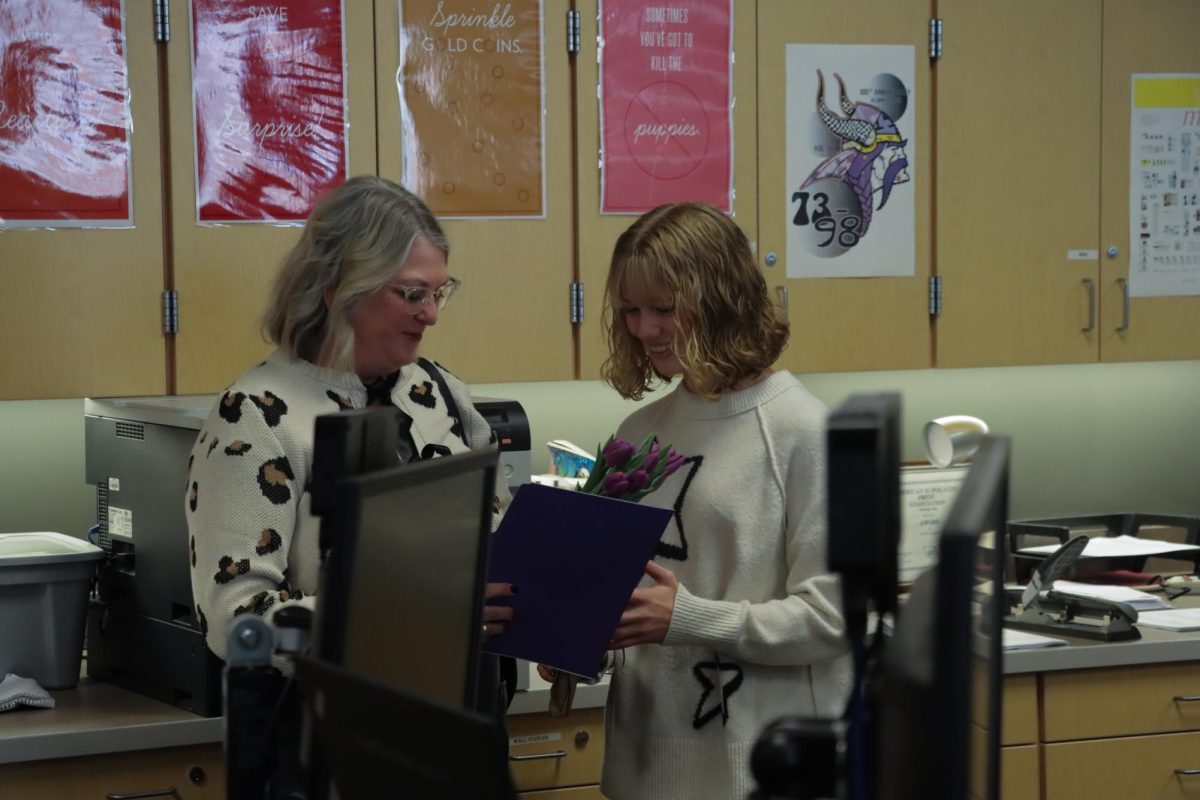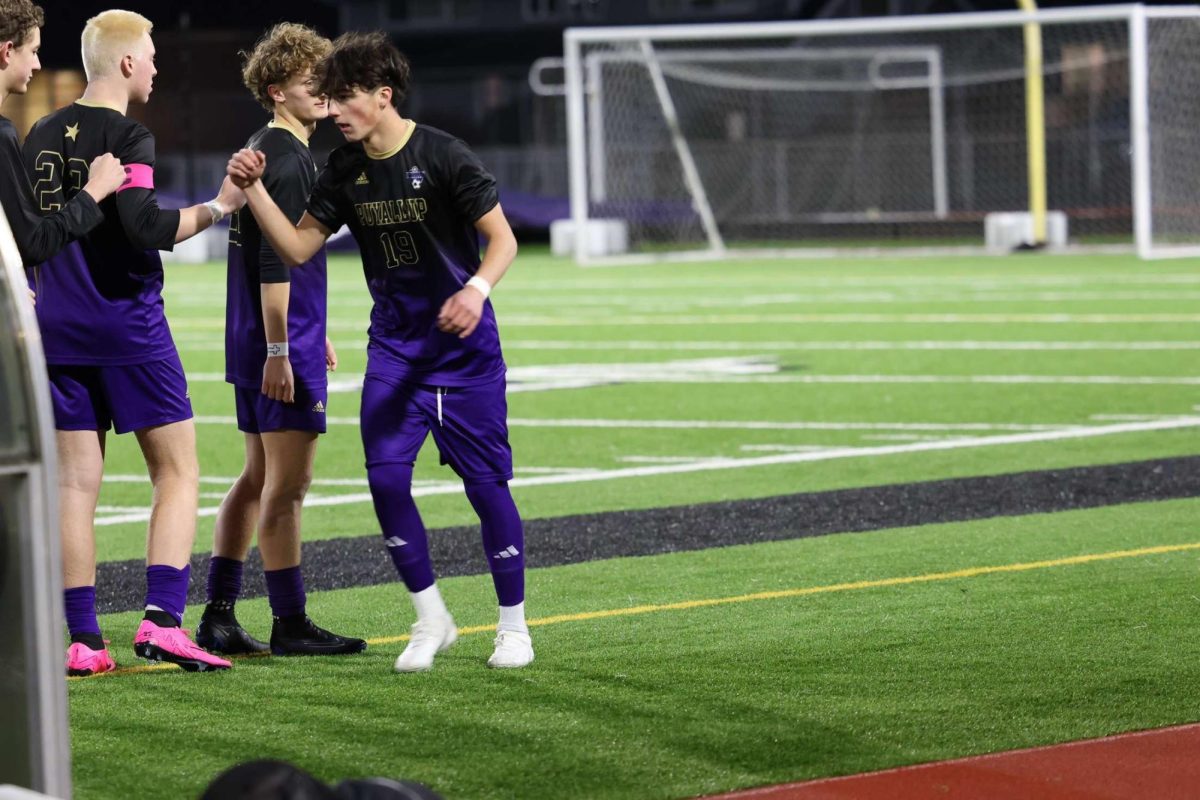Over the summer, teachers and five other employee groups worked on renegotiating their contract with the Puyallup School District. These negotiations happen every few years, and cover things like the working conditions and salaries of district employees.
Bob Horton is the president of the Puyallup Education Association (PEA), which represents the certified educators in the Puyallup School District. That includes anyone from teachers to counselors to occupational therapists.
“I represent them in terms of their contract negotiations, representing them if there’s grievances have to be filed, if there’s a violation of our contract and advocating for them, that sort of thing,” Horton said.
On the district side, the Assistant Superintendent of Human Resources and Employee Relations Amie Brandmire leads the negotiating team for the district.
“Our goal is to always make sure that the language [of the contract] is clear and to make sure that we are maintaining what is needed to sustain the operations of the district efficiently and in support of students, while also listening to the needs of the employees when they come to the table… and try to reach that win-win resolution that meets the needs of both parties at the table,” Brandmire said.
For teachers, the bargaining starts when the PEA chooses members of the bargaining team.
“We want [the bargaining team] to be as well rounded as possible,” Horton said. “A high school teacher, a junior high teacher, an elementary teacher, a special ed teacher, we try to get somebody who’s a specialist, who works as like a band director, a PE teacher, an elementary music specialist, that sort of thing. And then we pick our team. Besides myself, there were seven members on the team.”
Then, the PEA sends a survey gauging the needs of teachers.
“Eighty-one percent of our members completed the survey, which for a union our size, it’s kind of unheard of. We usually think that, like 60% is good, 70 or 60% is what you kind of expect… 80% and above, for a union our size is kind of an unattainable number of members. And we did that,” Horton said. “We then hold listening sessions at the end of April, beginning of May… where the bargaining team sits down with specific groups within the union… and we come up with a blueprint. The blueprint is what do the members want? What are their priorities? So we lay that out, and then we start meeting as a team to start to say, ‘Okay, these are the priorities. How do we draft language for the CBA? And then we arrange mutually agreed upon times with the district.”
During those times is when the bargaining between the teachers’ union and the district begins.
“Depending on the number and the depth of topics that need to be addressed by both parties and the size of the CBA, the bargaining process can take weeks, or it can take many months to complete… we talk through the existing language in the CBA, and we discuss concerns or needed changes from each party’s perspective throughout the process, both parties craft recommended changes to the language and or make new language suggestions. And then, once we reach an agreement one section, we move on to the next, until we’ve reached agreement on all of the remaining priority items that need to be addressed by both parties,” Brandmire said.
Sometimes, unfortunately, those agreements aren’t reached.
“If we didn’t have a TA [tentative agreement] then we would bring to the membership information about where negotiations are at, and then talk about next steps with the membership,” Horton said. “Does next steps mean that the members say, ‘Hey, okay, we’re fine going back to work without a contract, but in two weeks, we want another we want a contract or an update… It may be that during that time they plan to decide that they’re going to work for their contract. I mean, they’re not going to enter their building until their official contract time starts, and as soon as the contracted time ends, they’re going to walk out of the building, and they’re not going to do work away from the building.”
Of course, the most drastic option would be a strike. This year, Yelm School District narrowly avoided a strike, although school was postponed two days to Wednesday, Sept. 4, and paraeducators at Mount Vernon School District were on strike for three days, causing school to be delayed until Tuesday, Sept. 3. In 2018, teachers in the Puyallup School district voted to strike, delaying school by nearly a week.
“That would be an option, [the strike] that happened in 2018 when the membership… gave us so many days to get an agreement, and if we didn’t get an agreement, then they authorized a strike, And that’s what happens. It’s the membership that decides, not the bargaining team. The bargaining team does all this work, and then we bring it to the membership, and they make that decision,” Horton said.
The teachers were just one of the six groups at the district negotiating their contract this year. At the time of press, teachers were the only group to have ratified their contract.
“We have security that’s open [for contract renegotiations] and teachers… PESPA is the acronym for [Puyallup] Educational Support Professionals Association [or paraeducators], they’re open. Our coaches and extracurriculars group is open. Mechanics are open, and then our Principals Association, so six groups in all this summer,” Brandmire said.
While the negotiations may seem adversarial from the outside, both groups hope for the same outcome.
“In theory, a contract negotiation is theoretically kind of adversarial in terms of ‘We want things from the district, they want things from us,’ but the whole idea is that you’re trying to work in a cooperative manner to come to a mutual agreement on how you can benefit your workers and also make sure that your organization can continue to move forward,” Horton said.
The district’s priority is to maintain the relationship between all employee groups.
“Even though we don’t always agree on every issue, we’re always committed to create that win-win outcome in bargaining, and we’re just super grateful for the ongoing partnership of our employees and those labor groups,” Brandmire said.






